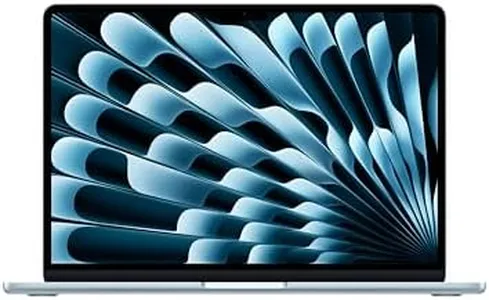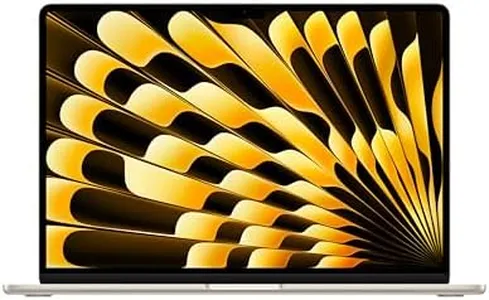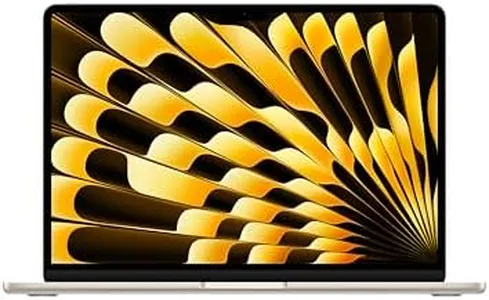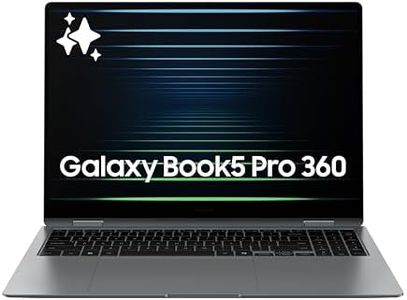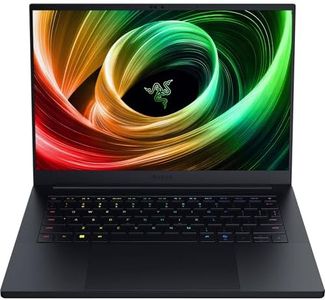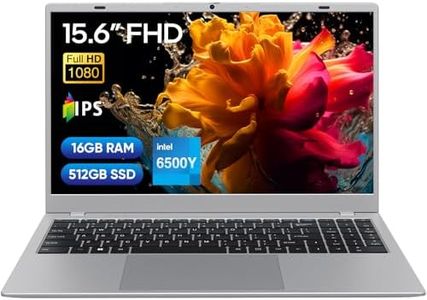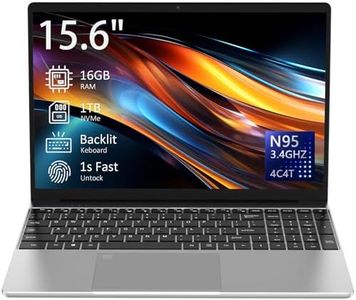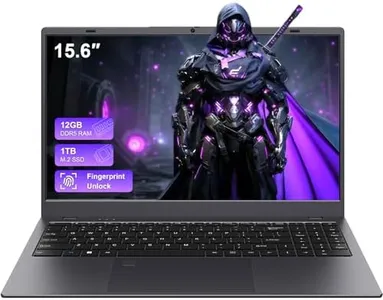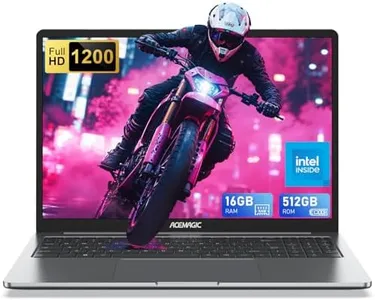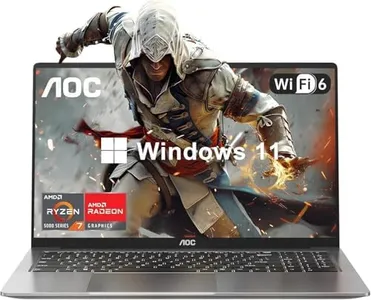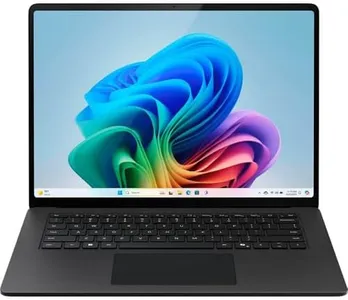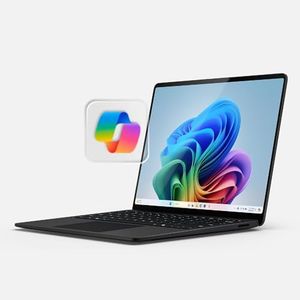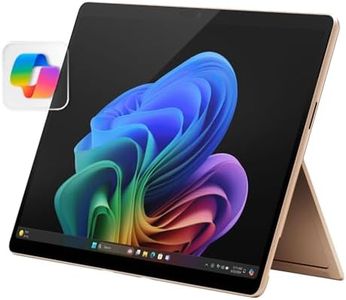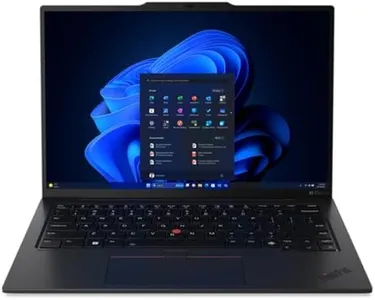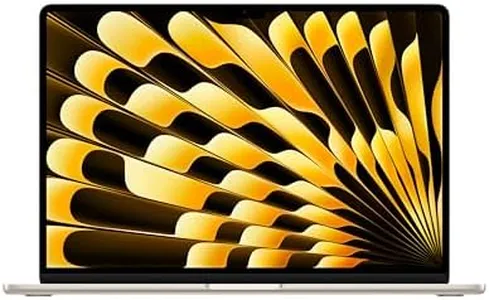10 Best Lightweight Laptops 2025 in the United States
Our technology thoroughly searches through the online shopping world, reviewing hundreds of sites. We then process and analyze this information, updating in real-time to bring you the latest top-rated products. This way, you always get the best and most current options available.

Our Top Picks
Winner
Apple 2025 MacBook Air 13-inch Laptop with M4 chip: Built for Apple Intelligence, 13.6-inch Liquid Retina Display, 16GB Unified Memory, 256GB SSD Storage, 12MP Center Stage Camera, Touch ID; Sky Blue
Most important from
4414 reviews
The Apple 2025 MacBook Air with the new M4 chip is a strong choice if you want a lightweight laptop that combines power and portability. Weighing just 2.73 pounds, it’s easy to carry around, making it ideal for students, professionals, or anyone frequently on the go. The 13.6-inch Liquid Retina display offers vibrant colors and sharp details, delivering a great viewing experience for everyday tasks like browsing, video watching, or light photo editing. With 16GB of unified memory (RAM), the laptop handles multitasking smoothly, whether you’re switching between work apps or streaming media. The M4 chip provides a good balance of speed and efficiency, letting you work or play without lag, including some photo and video editing or casual gaming.
Battery life is impressive, with up to 18 hours of video playback, so you can expect all-day use without needing to charge often. Storage at 256GB SSD is standard for everyday use but may feel limited if you keep large files or many apps, so consider external storage if needed. The build quality is typical of Apple’s high standards, with a sleek, sturdy design in an attractive Sky Blue color. It also offers solid connectivity options like two Thunderbolt 4 ports, MagSafe charging, Wi-Fi 6E, and Bluetooth 5.3, ensuring fast connections and support for multiple external displays.
The 12MP Center Stage camera, three-mic setup, and four-speaker system deliver clear video calls and good sound, useful for remote work or meetings. While the limited storage and lack of more varied ports might require adapters or external drives depending on your needs, the MacBook Air is well-suited for most everyday users who want a reliable, stylish, and lightweight laptop with excellent battery life. It is not designed for heavy gaming or very demanding professional software but fits well for general use.
Most important from
4414 reviews
Apple 2025 MacBook Air 15-inch Laptop with M4 chip: Built for Apple Intelligence, 15.3-inch Liquid Retina Display, 16GB Unified Memory, 256GB SSD Storage, 12MP Center Stage Camera, Touch ID; Starlight
Most important from
1589 reviews
The Apple 2025 MacBook Air 15-inch is a strong choice if you're looking for a lightweight laptop that combines power and portability. Weighing just about 3.3 pounds, it’s easy to carry around, making it suitable for students, professionals, or anyone often on the go. The 15.3-inch Liquid Retina display offers sharp and vibrant visuals with support for a billion colors, which is great for watching videos, photo editing, or just browsing with crisp text. Battery life is impressive, lasting up to 18 hours on video streaming and around 15 hours of wireless web use, helping you get through a full day without hunting for an outlet.
Under the hood, the new Apple M4 chip with 10 CPU cores and a 10-core GPU delivers fast and smooth performance, whether you're juggling multiple apps, video editing, or light gaming. The 16GB of unified memory (RAM) ensures apps run efficiently, though the 256GB SSD storage might feel a bit limited if you store lots of large files or media; external drives or cloud solutions could be needed. Build quality is premium, with a slim profile and durable materials, plus the backlit Magic Keyboard and Touch ID add convenience and security. Connectivity includes two Thunderbolt 4 ports, a MagSafe charging port, a headphone jack, Wi-Fi 6E, and Bluetooth 5.3, covering most daily needs but lacking more port variety like USB-A.
The 12MP Center Stage camera and good microphone system boost video calls, which is handy for remote work or classes. This MacBook Air fits well for those invested in the Apple ecosystem, as it works seamlessly with iPhones and other Apple devices. If you want a lightweight laptop that doesn’t compromise on power and screen quality, and you’re okay with moderate storage, this model is worth considering.
Most important from
1589 reviews
Apple 2025 MacBook Air 13-inch Laptop with M4 chip: Built for Apple Intelligence, 13.6-inch Liquid Retina Display, 16GB Unified Memory, 512GB SSD Storage, 12MP Center Stage Camera, Touch ID; Starlight
Most important from
4414 reviews
The 2025 Apple MacBook Air with the M4 chip is a strong pick if you want a lightweight, high-performance laptop that’s easy to carry around. Weighing just 2.73 pounds, it’s very portable and has a slim profile, making it ideal for students, professionals, or anyone on the go. Its 13.6-inch Liquid Retina display offers sharp, vibrant visuals with support for 1 billion colors, which means photos, videos, and text look crisp and lively. Apple’s M4 chip delivers fast and smooth performance whether you’re multitasking, editing videos, or enjoying casual gaming. With 16GB of unified memory and a 512GB SSD, the laptop runs apps quickly and provides ample storage for most users. Battery life is impressive, lasting up to 18 hours during video playback, so you can work or watch content without frequently searching for an outlet.
The build quality maintains Apple’s reputation for durability and sleek design, and the Starlight color adds a stylish touch. Connectivity is solid, featuring two Thunderbolt 4 ports, a MagSafe charging port, Wi-Fi 6E, and Bluetooth 5.3, supporting fast data transfer and multiple external displays. The 12MP Center Stage camera and four-speaker system with Spatial Audio enhance video calls and media experiences. One potential drawback is the limited number of ports, which means you may need adapters for some accessories. Also, the integrated graphics are not meant for heavy gaming or demanding 3D work.
This MacBook Air is an excellent choice if you value portability, long battery life, and smooth everyday performance in a premium, user-friendly package.
Most important from
4414 reviews
Buying Guide for the Best Lightweight Laptops
When choosing a lightweight laptop, it's important to consider a balance between portability, performance, and battery life. Lightweight laptops are ideal for people who are always on the go, such as students, business professionals, and frequent travelers. To make the best choice, you need to understand the key specifications that define a lightweight laptop and how they align with your specific needs.FAQ
Most Popular Categories Right Now
